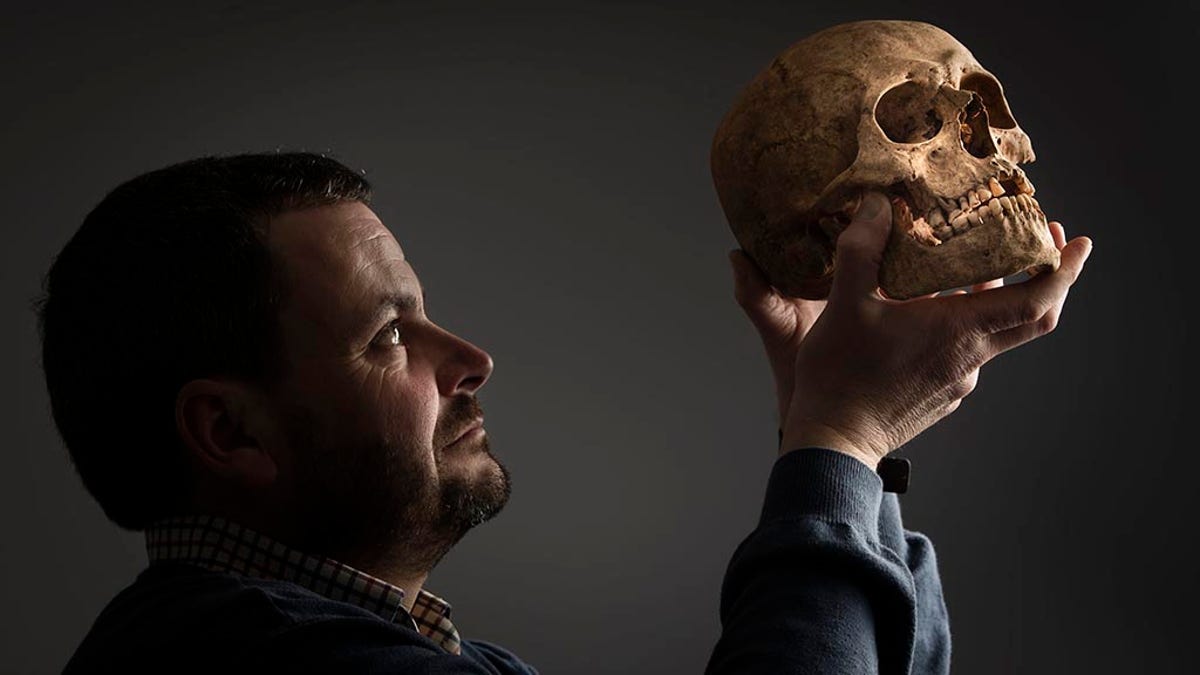
Hugh Willmott, Senior Lecturer in European Historical Archaeology from the University of Sheffield, holds a human skull that was discovered during excavations at a previously unknown Anglo-Saxon cemetery. (Press Association via AP Images)
The skeleton of a rich woman adorned with jewelry who was buried cradling a child has been uncovered at a previously unknown Anglo-Saxon cemetery.
The Lincolnshire burial site, first discovered by a metal detectorist, contains more than 20 sets of remains dating back 1,500 years.
Hugh Willmott, a senior lecturer in European Historical Archaeology at Sheffield University, said: "Almost without exception, the burials were accompanied by a rich array of objects, in keeping with the funerary rites adopted during the early centuries of the Germanic migrations to eastern England.
"What is particularly interesting is the significant proportion of very lavish burials which belonged to women.
EPIC TIME-LAPSE SHOT FROM SPACE IS LONGEST EVER
"These women wore necklaces made from sometimes hundreds of amber, glass, and rock crystal beads used personal items such as tweezers, carried fabric bags held open by elephant ivory rings, and wore exquisitely decorated brooches to fasten their clothing.
"Two women even received silver finger rings and a style of silver buckle commonly associated with Jutish communities in Kent.
“Furnished burials belonging to males were also identified, including a number buried with weaponry such as spears and shields."

Some of the artifacts discovered during excavations at a previously unknown Anglo-Saxon cemetery that unearthed lavish burials of women with their jewelry and personal items. (Press Association via AP Images)
The dig at the site in Scremby, Lincolnshire, was led by Willmott and Katie Hemer, from the university's Department of Archaeology, in collaboration with Adam Daubney, the Lincolnshire Finds Liaison Officer for the Portable Antiquities Scheme.
ENORMOUS 20,000-POUND 'RHINO ELEPHANT' ROAMED THE TRIASSIC
The cemetery was discovered when a local metal detectorist began to uncover a number of Anglo-Saxon artifacts, including copper gilded brooches, iron shield bosses and spearheads typical of those found in early Anglo-Saxon burials.
International volunteers, students from Sheffield University, and members of the RAF from nearby stations took part in the excavation, which is the first to have been extensively investigated since the 19th century.
Willmott said: "Children were notably absent in the parts of the cemetery excavated this year; however, one of the most striking burials was that of a richly-dressed woman who was buried with a baby cradled in her left arm.
Click here to read more at The Sun, where this story was originally published.
